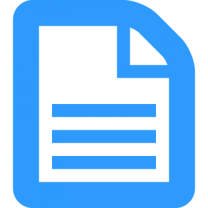

Drafting a request for proposal for a website design project can be a tedious and dreary process. Companies seeking a vendor frequently write exhaustive checklists containing dry information and/or questions. While some of these arid details are often necessary, the RFP should not resemble something issued by the IRS.
The RFP ideally should serve as an opportunity for you to develop vivid images of how you would like to see yourself or your company represented online. By conveying these concepts to developers, you will be well-positioned to see how they can leverage their expertise to bring your web dreams to life.
Note: We created a simple eBook for how to write a website design RFP - Feel free to download it.
The following steps will guide you through easily creating a pragmatic RFP that allows developers to showcase best how their capabilities align with your vision.
Surf the net and explore areas of web design that excite you. Compare sites and decide which format will best represent your business. Save all your findings for discussions with your developer.
Provide developers with a sense of your company's essence so they may propose ways to make your core strengths shine through your website. Some items to mention may be mission, culture, customers, products/services, competitive edge, and trajectory.
Let the creative design agency know who will view the website so they can tailor suggestions to this demographic. Some areas to explore here are customers, desired customers, and employees.
This segment of an RFP positions web designers to offer you targeted suggestions on the technical aspects of your website design project. Some components of a project overview may include content types/organization, functionalities, eCommerce, technology integration, and marketing goals.
Developers will want to know who is involved and their contributions. Let them know who will contribute to decision-making and identify all parties external to the web design agency.
Some key temporal factors may include the project start date, website launch date, and any major milestones in the development process.
Much like a tangible product with many moving parts (e.g., a car), once a website is built, it must be maintained to serve its purpose effectively. Let the developer know what support services you want after launching the site.
Determine your financial limitations and price range. This will help you attract the right website design vendors for the proposal.
Pose some questions to your future web developer so you will be better positioned to gauge their capabilities when they submit a proposal. Some items are their specialties, competitive advantage, clients, and work samples.
by Jonathan Franchell, CEO of Ironpaper - For more tips and hacks: Need to remove a new line after h1 tags? Both web designers and SEO practitioners need to employ headline tags: H1, H2, H3 in several ways to improve web page structure and tag...

The Crowded Arena of the IT Marketplace Updated December 2024 The Information Technology (IT) landscape is experiencing rapid growth and intensifying competition. IT spending is projected to reach nearly 5.1 trillion U.S. dollars in 2024, a...

Updated December, 2024 The field of digital marketing is evolving rapidly in response to new technology and changing buyer expectations. To help career-minded marketers, we’ve rounded up the top 10 skills needed to succeed in the field. These are...
